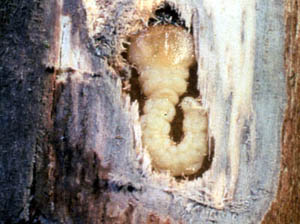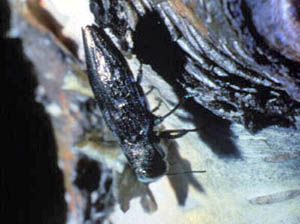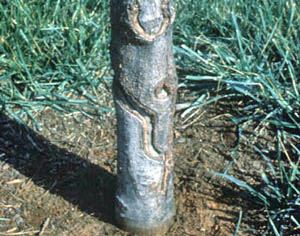Flathead Appletree Borer (Crysobothris femorata)



Adults may reach ½ inch in length. They are oval, flattened beetles, metallic greenish bronze above and brassy below. The wing covers have wavy, light-colored indentations. The white larvae, commonly called flatheaded borers, are expanded just behind the true head, which is black. There is one generation a year. Larvae overwinter in galleries inside the host plant.
Preferred hosts include sycamore, red maple, silver maple, willow, oak, tuliptree poplar, elm, beech, hickory, apple, pear, dogwood, and black walnut.
Larvae bore fairly large, irregular cavities in phloem tissue of the main trunk and larger branches. Young trees and trees under stress are particularly attractive to this pest. Larvae are usually found boring into the base of trees. Small trees often are killed.
Adults run over bark and are quick to fly. They are most active on exposed, sunny bark of weakened trees from early March through May and early September through October.
Maintain vigor through use of good cultural practices. If numerous adult beetles are noted on bark, spray the trunk and major branches with an approved residual insecticide.
